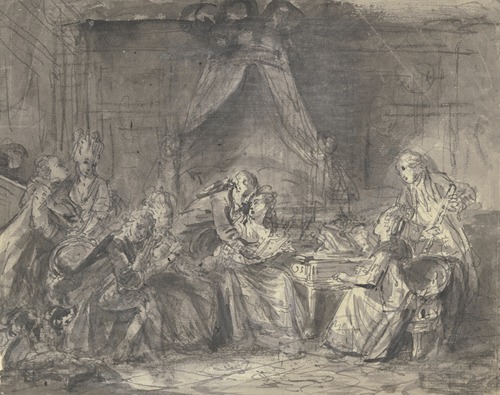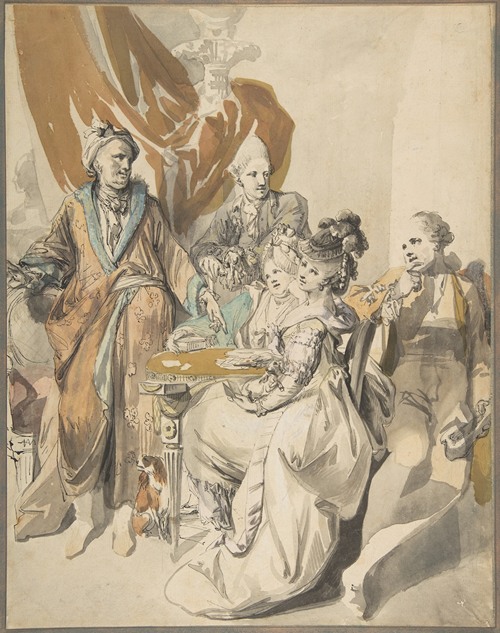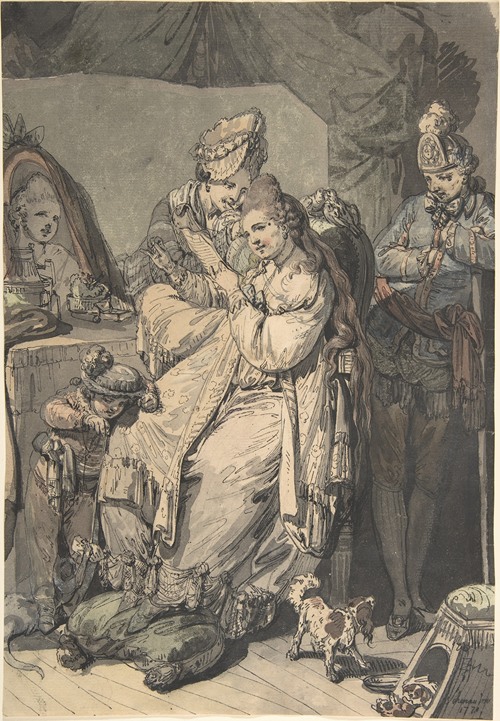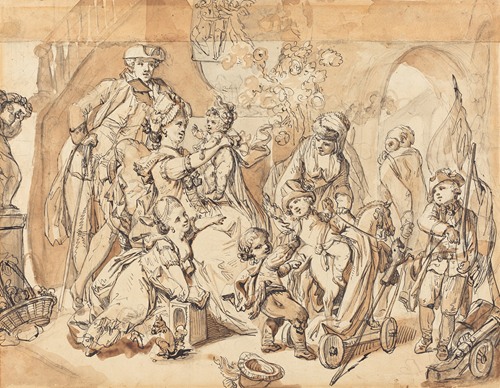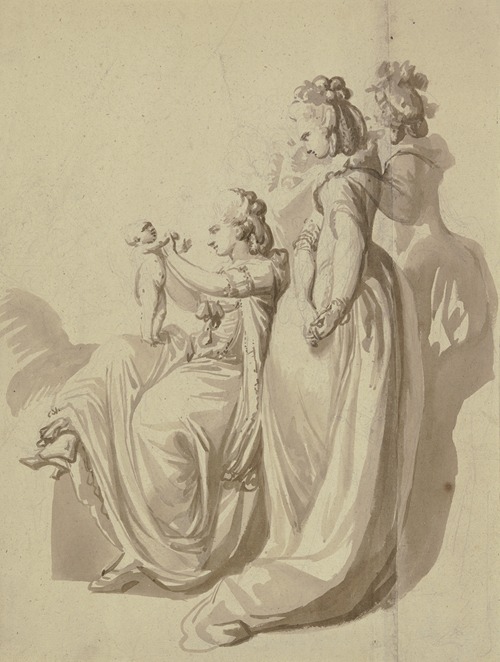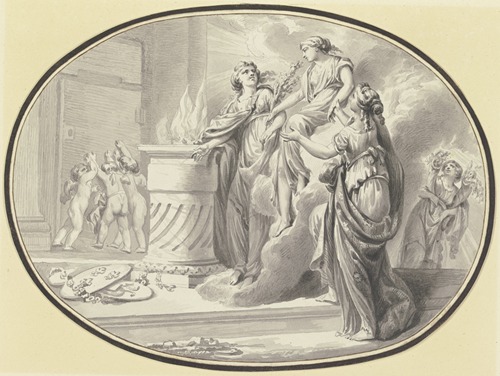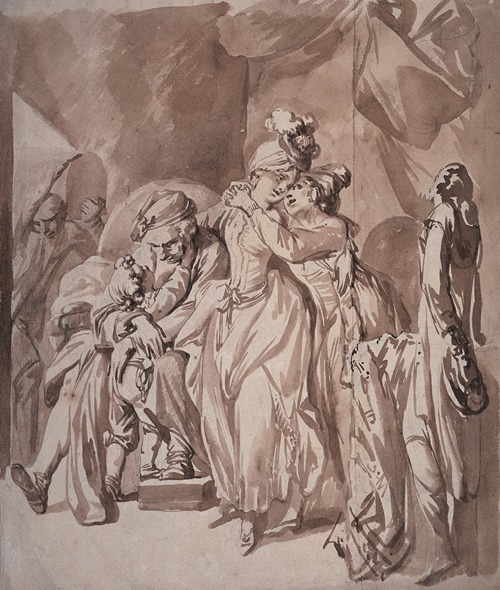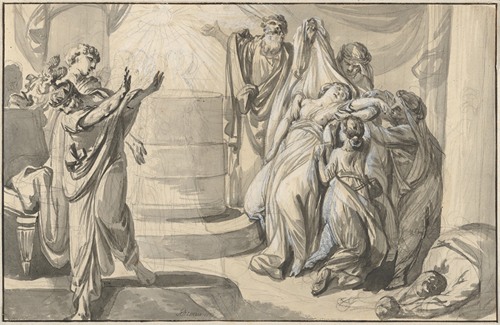
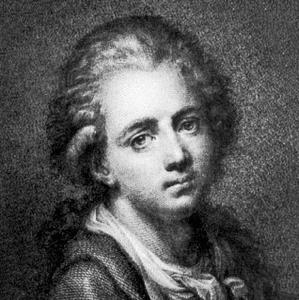
Johann Eleazar Zeissig, also known as Schenau, was a German genre, portrait and porcelain painter, and engraver; director of the Royal Academy of Arts in Dresden.
Schenau was born in 1737, the son of Elias Zeissig and Anna Elisabeth (née Paul), poor Damask weavers, of Großschönau, near Zittau in Saxony. Together with his five sisters, he was tutored by his father in arithmetic, writing, reading and also learnt the trade of Damask weaving. He showed an early talent for painting and drawing, and was sent away at the age of twelve to study art in Dresden, where he was also employed as a lawyer's clerk. Through the help of a pupil of Anton Raphael Mengs, he was accepted at the Dresden art school.
Here, Schenau was taught by Charles-François de Silvestre, the son of the director of the school, Louis de Silvestre. In 1756, after the outbreak of the Seven Years' War, he accompanied the Sylvestre brothers to Paris, where he stayed until 1770, working at the Royal Academy of Painting and Sculpture with, amongst others, Johann Georg Wille. He became acquainted with leading French artists of the day, such as François Boucher, Gabriel François Doyen, Maurice Quentin de La Tour and Edmé Bouchardon; he was particularly influenced by the work of Jean-Baptiste Greuze. Schenau copied the works of the old masters such as Antonio da Correggio, Guido Reni and Titian, and acquired the patronage of the Saxon ambassador, General Fontenay. He also became a china painter, working at the porcelain factory in Sèvres, taking on, in addition, the roles of goldsmith, engraver and sculptor.
Through the influence of his mentor, Charles-François de Silvestre, or his wife, the teacher and confidante of the Dauphine Maria Josepha, Schenau was introduced to the French court; he received many commissions from the Crown Princess of France and was soon the most respected genre painter in Paris. He painted portraits of, amongst others, Maria Josepha and Madame de Pompadour.
In 1770, at the end of the Seven Years' War, Schenau went back to Dresden. In that year he became a member of the Dresden Academy of Fine Arts and, three years later, the Director of the drawing school of the porcelain factory in Meissen. In Meissen, he taught students not only drawing on china, but also created new designs.
In 1774, he became professor of genre and portrait painting at the Dresden Art Academy. After the death of Charles François Hutin, in 1776, he was made, together with Giovanni Battista Casanova, alternate director of the academy and on Casanova's death in 1795, the sole director. Among his students were Christian Henry Becke, Friedrich Rehberg and Christian Leberecht Vogel; amongst his admirers was the writer August Gottlieb Meissner, who dedicated his book Alcibiades (1781) to the artist. In 1796 Schenau returned from the Meissen porcelain factory and devoted the following years to teaching at the Art Academy.
Schenau died in 1806 in Dresden. His grave was originally located in St. John's churchyard (Johanniskirchhof) but, during the secularization of the cemetery, was moved 1854 to the cemetery in Großschönau.
